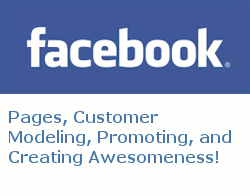If you are in a customer-facing job role, you have surely heard the common question of “how much does it cost?” Many of us hear it long before questions of value even come into consideration, and it seems especially common in SEO (search engine optimization).
I consider the “how much does it cost” shopping approach a very worthwhile reason to scream at somebody and demean them. I usually try to hold back that urge, but it is definitely scream-worthy. I have very often answered it by hanging up the phone. That is because I take it as an indication that the person asking will only see a dollar amount and not what it represents.
When it comes to SEO (search engine optimization), “how much does it cost” is absolutely the wrong question to open discussions. I will explain why the cost of SEO is far down the list of things which will matter, and whether you are on the buying side or selling side of SEO, this should be useful to you. I will also explain why the question of how much the SEO will cost is not only a moving target, but also ways to determine an appropriate cost.
First, consider this: The topic struck me when I see how often my wife, Chef and Owner of Mad Eliza’s Cakes and Confections, answers burning questions about the cost of wedding cake. It happens very often that a bride-to-be will ask how much her wedding cake will cost, before even having a good idea of the design or even how many guests it needs to feed. I find a lot of people shop for SEO the same way. From now on, you will know better!
The SEO Cost Should Be Based on the Need
There is no practical way of answering questions of the cost of SEO until the variable of need is addressed. Assessing the need for SEO should be based on client goals and accurate marketing projections. To get to the right number, you must have a good fix on the overall market potential, and how much market share can be reasonably expected at a given level of action.
This is not rocket surgery, but it does require more than just guesswork. A good projection will be based on multiple variables, but a good start is to know how many people are looking for what you offer.
If you are not clear on how many people are looking for you, and what they are looking for, close estimates can be made using tools such as SpyFu, WordTracker, and Google’s keyword tool. These tools can help you find out how many people are searching for what you offer, and provide a glimpse of the overall market potential.
More useful information on this topic is available in the article titled “Improve SEO Return on Investment (ROI) With Simple Math“.
The Point of Diminishing SEO Returns
It is possible to overestimate your efforts and do more SEO than you need. I have never seen it happen in real life, but the theory makes sense. If you are spending more money on SEO than the potential for your entire market, there is a point where it would be wasteful. However, the ugly monkey which stares many people in the face is that in the beginning, most SEO efforts will cost more than they return. So, this brings up the point of how far you can see into your future.
Short-Term SEO Cost vs. Increased SEO ROI Later
Let’s look at this with a bit of logic. There is no return on investment (ROI) at the point when you write the first check for SEO. Having short term (30, 60, and 90 day) goals is important for most companies. When more effort is focused on short term SEO goals than long term goals, the expected overall ROI is lowered. There is a balancing point which is important to reach.
If you need to meet short term objectives in order to produce cashflow to achieve longer term goals, the end cost will generally be higher. This is because you are overemphasizing the short term objectives just to pay for the higher return long term goals.
Where SEO Cost Goes Off The Rails
While I was writing this article, I was distracted by the ding of a message coming from the live chat on my contact page. It was from a really nice guy named Eric, and here is how the chat went:
[11:04] murnahan: Sure.
[11:05] murnahan: You are welcome to ring me if you prefer. My direct line is *REDACTED DUE TO AGING WEBSITE* or my Skype username is “murnahan”.
[11:05] Eric: I came across your site researching SEO tips and first off, great information. I’m trying to gain an understanding of SEO, and it’s obviously very in-depth. I’m a vey tech savvy person but not really on the “up and up” for SEO. Anyway, I manage a national moving company, and we’re looking to increase our search traffic. What type of services do you offer that you think could help us out?
[11:07] murnahan: There are a lot of answers to that question, but perhaps the best one is this: I can make your company more attractive, somewhere along the lines of sex and bacon.
[11:08] Eric: Hm. I do like both of those things
[11:08] murnahan: When you make your company more attractive, the word spreads, and you get bigger pay checks.
[11:08] murnahan: See what I mean … most people do! LOL
[11:08] Eric: I would actually like to speak with you. can I call now?
[11:09] murnahan: sure … my ears are on.
Well, Eric called me and we spoke for a while. It was a good talk, and I listened to what his company does, and where they hope to go with it. As we talked, I was thinking … I do that a lot. One of my first thoughts was how important it is for a moving company to gain people’s confidence. I have heard a lot of nightmares about how moving companies break stuff, steal stuff, and scam people out of extra money once they have your stuff in their trucks. In fact, I have a friend who is in a lawsuit against his mover right now.
Eric asked me if I had any ideas on how I could help his company. Although this is the exact stuff I am paid to do, I thought I’d at least let him know I was listening and thinking. I discussed a few ideas with Eric about how we could make his moving company a little more sex and bacon-like.
Since his company has complete access to people’s stuff, I suggested that overcoming the potential customers’ fears about movers would be an important step to increasing their business. Of course, this is only one piece of a larger strategy, but a critical one.
I told Eric I thought it would be really neat for them to walk into each job and hang a half dozen IP cameras on the walls and provide customers a website login in case they want to look in on the progress. Then I pointed out that the cost of an 8 gigabyte SD card is under 30 bucks, and it may be cool to hand people a complete video record of their move when he hands them their bill. Not only could this set them apart as a more trustworthy company, it could also be a nice benefit for people to document all of their belongings for insurance purposes. It would provide customers with greater confidence, and give them something valuable, all at once.
OK, so it may cost a few bucks. It could easily have a one-time cost a thousand bucks or more per truck for wireless cameras and a laptop with a built-in Internet connection. That is not bad, considering it is a tiny fraction of the cost of a tractor trailer and other moving equipment. It would take them an extra 10-20 minutes (of a 4-6 hour job) to hang some stick-on hooks to place the cameras, and $30 for an SD card. The technology part would be a breeze, for me. Heck, I did a 6,000 mile live mobile webcast from a race car. This one would be a no-brainer, and the moving guys would only have to know how to turn on a laptop and click a “start” button.
Can you imagine how much that relatively small extra effort could pay them with customer confidence? Can you imagine what would happen if major tech blogs picked up the story of their success in using technology to overcome real-world trust barriers? It could make a nice press release for tech bloggers, television, and more. Can you imagine how that could affect their SEO?
How Much Does SEO Cost Now?
I never worked with a moving company, and this idea sprouted up fresh from a short conversation during a free consultation. It gets even better if Eric pays me for my ideas. Eric didn’t call to ask me about the cost of SEO. He asked the right questions, centered around value and calculated return on investment.
When he asked me about how much SEO would cost, it was more about how much he needs to beg, borrow, and steal to get the results that he wants for his company. He understands that good marketing is what makes companies bigger, and that bad SEO can cost a lot more than good SEO. That is a whole lot different than simply fearing the cost of SEO.
Get the SEO Questions Right
If you know the right questions to ask about SEO, you will have a lot better results. It will help you to avoid being taken advantage of by SEO lies, and to realize why SEO is a lot more than just technical geeky work.
I have always said that coffee and cigarettes are the best SEO and social media marketing tools. If that sounds crazy, please be sure to see this video explaining why I know it is true.
My Answers About “How Much Does SEO Cost”
Every search engine optimizer will have a different answer about the cost of SEO services. Some of them will be right, and some of them will be woefully wrong. We each work differently, and each have different skill sets and levels of marketing talent. In my case, I require a sizable investment, and I am not a good match for most companies. I prefer to only work with two to four clients at a time, and my projects come with a three to twelve month commitment. That should pretty well explain why I don’t do SEO for dog walkers.
Something important to consider is that until the other important questions are answered, the matter of cost will always be incorrect. This is simply not a commodity business, and everybody will have different needs and expectations. Throwing around dollar amounts is a waste of time if the purchaser and the provider do not fully understand each other, and the job at hand.
I want to leave you with these thoughts regarding the cost of SEO from my perspective:
- Yes, I have a family of five, and each of them like to eat every day.
- Yes, I do own a motorcycle that cost more than my first two houses, combined.
- Yes, that is a real Picasso hanging in my living room (pictured above).
- Yes, it will cost you a lot more than the money in my hand to get my attention.
- Yes, my clients always earn more profit from my work than I do!
- Yes, I will probably scream at you and hang up the phone if you call me to ask “how much does SEO cost?”
Now, please answer me … do you really think that it is the same thing wherever you go?
Here are some related articles I have written regarding the cost of SEO and placing cost above value. I hope you will enjoy them.
- Enterprise SEO Services: How Enterprise Justify SEO Cost
- How Much Does a Website Cost?
- SEO and Web Development Hourly Rates
- Marketing Cost vs. Marketing Value
- Websites As Low As $175,000 + $25,000 Monthly Maintenance
- Where Does Marketing Talent Come From and What is the Cost?
Podcast: Play in new window | Download






